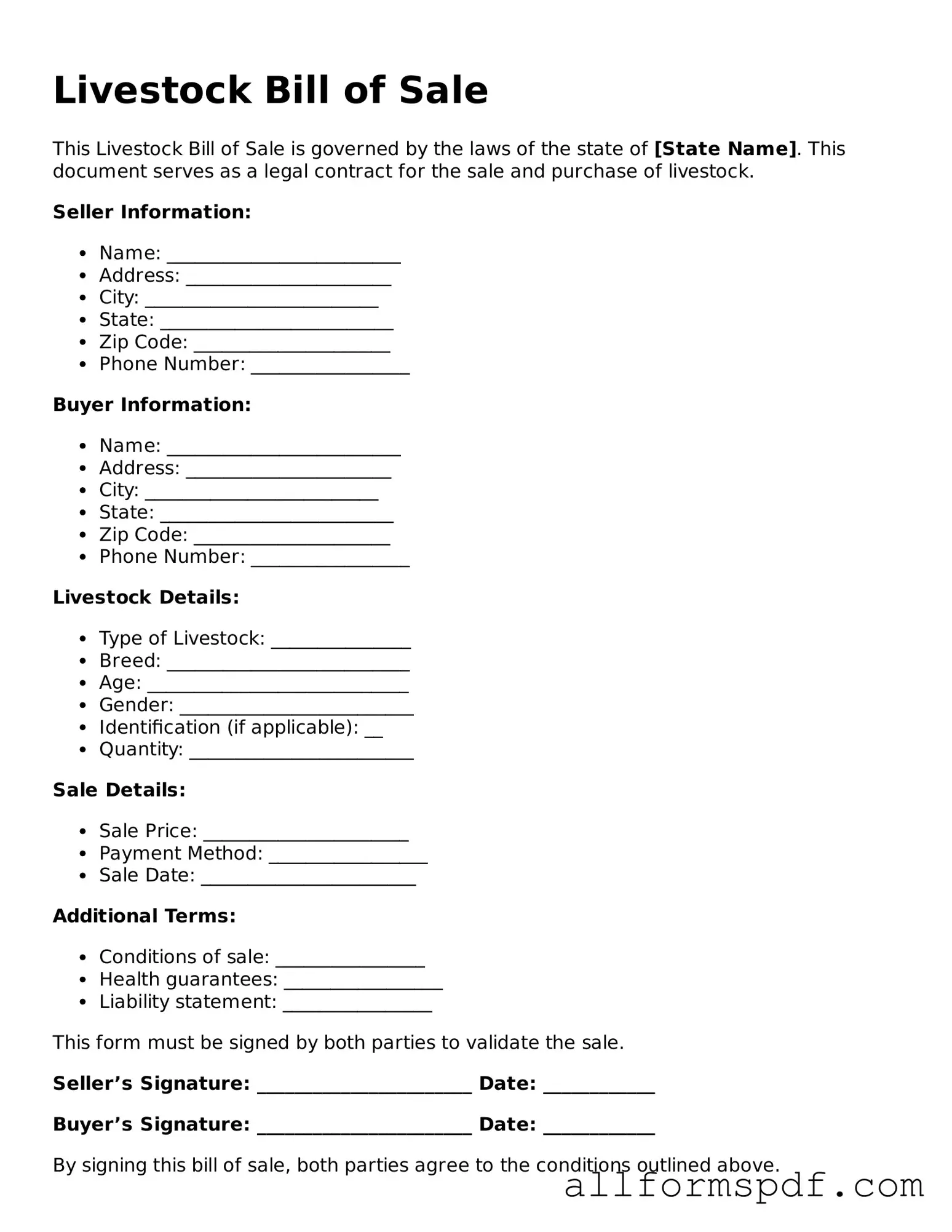Filling out a Livestock Bill of Sale form can be straightforward, but many people make common mistakes that can lead to complications down the road. One frequent error is failing to provide complete information about the livestock being sold. Buyers and sellers should include details such as the breed, age, and identification numbers. Omitting any of these details can create confusion and disputes later.
Another mistake is neglecting to include the sale price. This might seem minor, but without a clearly stated price, it can be difficult to establish the terms of the transaction. Both parties should agree on a price before finalizing the sale and ensure that it is documented on the form.
Additionally, people often forget to include the date of the sale. This date is crucial for legal and record-keeping purposes. Without it, the transaction might not be recognized in the event of a dispute or if questions arise regarding ownership.
Many individuals also overlook the importance of signatures. Both the buyer and seller must sign the form to validate the transaction. Failing to secure signatures can render the document ineffective and lead to potential legal issues.
Another common mistake is not providing contact information for both parties. Including phone numbers and addresses is essential for communication after the sale. In cases where issues arise, having this information readily available can facilitate resolution.
Some people make the error of not retaining a copy of the completed form. It is wise to keep a copy for personal records. This documentation can serve as proof of the sale and help clarify any future disputes.
Moreover, individuals sometimes misinterpret the terms of the sale. It’s important to clearly outline any warranties or guarantees regarding the livestock. If these terms are not explicitly stated, misunderstandings may occur, leading to dissatisfaction on either side.
Another mistake involves using outdated or incorrect forms. Always ensure that you are using the most current version of the Livestock Bill of Sale form. Using an outdated form can lead to compliance issues and may not meet legal requirements.
Lastly, people sometimes rush through the process, leading to careless errors. Taking the time to carefully review each section of the form can prevent mistakes. A thorough check can save time and potential legal headaches in the future.
